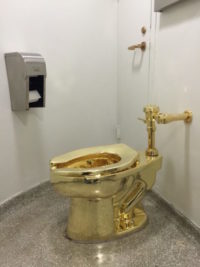As the year-end recaps gather on the horizon, many will attempt to make sense of Donald Trump’s ascent to the Presidency. Kurt Andersen’s book Fantasyland: How America Went Haywire provides a fascinating road-map.
The Atlantic posted a long excerpt. This is from Delancey Place about the roots of our inbred susceptibility to advertising.
“Are Americans More Willing to Believe in Advertising?”
Delancey Place
December 4, 2017
 From the earliest days, and continuing for decades and even centuries, promoters of the New World enticed colonizers with the promise of riches, causing the historian Daniel Boorstin to suggest that ‘American civilization [has] been shaped by the fact that there was a kind of natural selection here of those people who were willing to believe in advertising’:
From the earliest days, and continuing for decades and even centuries, promoters of the New World enticed colonizers with the promise of riches, causing the historian Daniel Boorstin to suggest that ‘American civilization [has] been shaped by the fact that there was a kind of natural selection here of those people who were willing to believe in advertising’:
“Although [Sir Walter] Raleigh never visited North America himself, he believed that in addition to its gold deposits, his realm might somehow be the biblical Garden of Eden. … A large fraction of the first settlers dispatched by Raleigh became sick and died. He dispatched a second expedition of gold-hunters. It also failed, and all those colonists died. But Sir Walter continued believing the dream of gold.
“In 1606 the new English king, James, despite Raleigh’s colonization disasters, gave a franchise to two new private enterprises, the Virginia Company of London and the Virginia Company of Plymouth, to start colonies. The southern one, under the auspices of London, they named Jamestown after the monarch. Their royal charter was clear about the main mission: ‘to dig, mine, and search for all Manner of Mines of Gold … And to HAVE and enjoy the Gold.’ As Tocqueville wrote in his history two centuries later, ‘It was … gold-seekers who were sent to Virginia. No noble thought or conception above gain presided over the foundation of the new settlements.’ Two-thirds of those first hundred gold-seekers promptly died. But the captain of the expedition returned to England claiming to have found ‘gold showing mountains.’ … In fact, Jamestown ore they dug and refined and shipped to England turned out to be iron pyrite, fool’s gold….” Read more.

 While waiting in line to pee in “
While waiting in line to pee in “